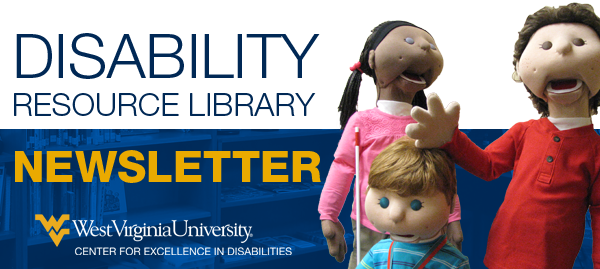
December 2022 - Highlightning All Things Fun!
Through play, children of all abilities develop an understanding of the world, learn problem solving skills, build self-esteem, develop motor and social skills. This issue of the Disability Resource Library Newsletter will be highlighting games and other fun activities that are easier to access for children with disabilities. We will discuss accommodations and modifications that can be easily made to meet the needs of children with different abilities, link resources for community parks, programs, and other sources of recreation in our state. Do not miss the holiday gift guide if someone you love could use an accessible toy this year! This issue is for All Things Fun!
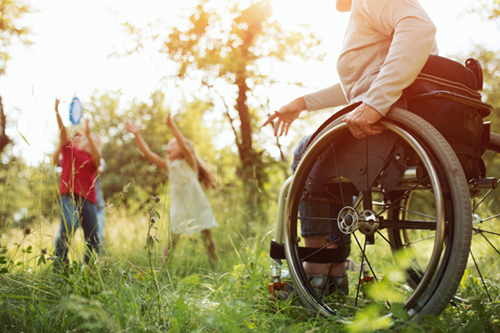
Featured Resources
All featured resources are available to borrow from the DRL
Browse more resources.101 Games and Activities for Children with Autism, Asperger's and Sensory Processing Disorders
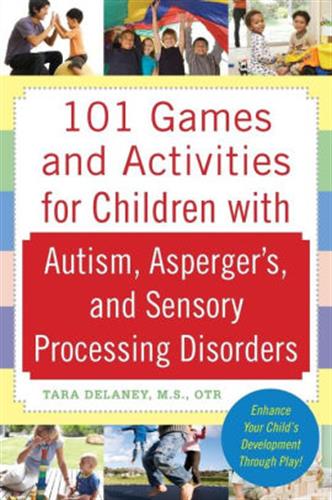
By: Delaney, M.S., OTR, Tara
In 101 Games and Activities, occupational therapist, Tara Delaney, shows you how to teach your child and enhance their development through playtime activities.
Early Intervention GAMES
By: Sher, Barbara
Fun, joyful ways to develop social and motor skills in children with autism spectrum disorder and sensory disorders. The author clearly explains what sensory issues are in a way that is easy to understand and provides simple exercises. This is a wonderful resource for families looking for ways to have fun while building social, motor, sensory and self-advocacy skills.
Inclusive Games
Browse more resources.Real-Life Chutes and Ladders
Inclusivity ★★★★
Set Up Time ★★★★★
Cost $60-$80
Lay out a series of ropes on the ground of an open play area. Arrange the ropes in a path with several straight sections as well as a few bends to change the path’s direction. Lay hula hoops and foam spot markers along the path and set up cones (weighted is best) at each turn of the path. Players take turns rolling foam dice and then moving that number of hula hoops/foam spot marker “spaces” along the path. Players with impaired vision can use the rope as a guide. Players using a wheelchair or on foot can step into the hoops or wheel alongside them. Landing on a foam spot marker sends the player back to square one. The first player to reach the end of the rope path wins. Players can also buddy up in pairs to help each other reach the finish line.
Material list:
- Several jump ropes
- 5-8 hula hoops
- Foam squares
- Weighted cones
- Foam dice
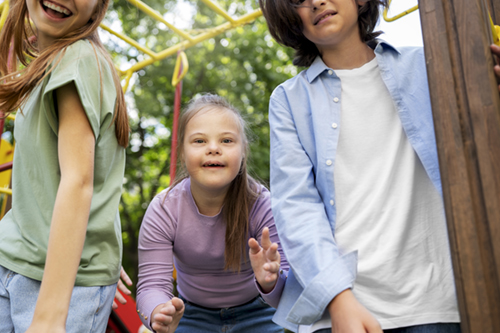
Balloon Polo
Inclusivity ★★★
Set Up Time ★★
Cost $60-$80
Players can use pool noodles and/or hands to keep a balloon afloat in the air. They can divide into teams and a designated mediator can add balloons to the air to increase difficulty. The team to keep the balloon(s) afloat the longest wins.
Material list:
- Pool noodles
- 1-6 balloons inflated
Simon Says
Inclusivity ★★★★
Set Up Time ★
Cost $60-$80
To play Simon Says, one person will be the “Simon”. The Simon should make note of the other players and should only give demands that every player can do. For example, if another player utilizes a wheelchair, the Simon should only ask players to move their hands and arms. They can however, command the players to move backwards or forwards, which a player with a wheelchair can do. The Simon will give commands that every player must follow but only if the command starts with “Simon says”. If the Simon gives instructions without first saying “Simon says” and a player follows through with the instruction, then that player is out. For example, if Simon says “Simon says touch your nose” then all players should touch their noses, if someone does not, then the player is out. If Simon says “point to the person on your left” and players point, those players are out because Simon did not say “Simon says”. The last player standing wins and gets to be the next Simon.
Material list:
None.
General adaptive strategies and etiquette
- Never start planning for a game by thinking of the child’s disability, rather think of what the child is able to do
- If assistance from another player, mediator or aide could be helpful for a player with a disability, the helper should ask first
- Use targets or goals that make noise when hit by the ball
- Vary the size, weight and texture of balls so players with visual differences can more easily tell them apart
- Include visual cues such as photos of players performing if the game needs a held pose, steps, or specific movements. For example, photos of a yoga pose at each station.
- Use Velcro on balls, gloves, mitts, paddles, etc. so every player can have success
- Have players work in pairs or teams so partners can help one another
- Loosen or eliminate time limits
Recreation in West Virginia
- Challenged Athletes of West Virginia
Runs the adaptive skiing program at Snowshoe Mountain Resort. - Adaptive Dance Classes at Oglebay Institute
Classes include adaptive cheer, dance, wheelchair specific, mixed abilities, low vision and more. - Special Olympics of West Virginia
Provides year-round sports training and competition for children and adults with disabilities. - Full Accessible Recreation in West Virginia Guide
Includes accessible locations in each county where children and adults of all abilities can have fun.
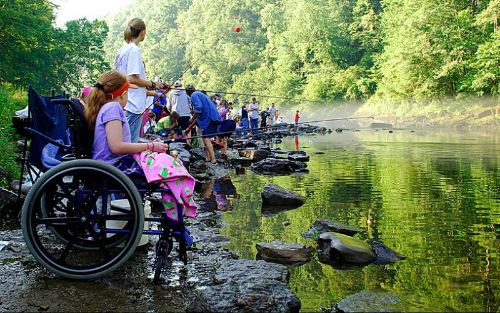
Holiday gift guide – try before you buy
#1 Bilibo

The Bilibo child seat is great for kids with Down syndrome, autism or sensory processing disorders. It is big enough for children of varying ages to sit comfortably, and helps stimulate senses, teach body awareness and encourage creative play. The rocking and spinning motions can be especially soothing for children with special needs.
#2 Busy Panel
Busy boards are a great tool for parents of children with special needs. Keep fidgety little hands focused, all while helping your kiddo develop basic skills like shoe tying, belt buckling, zipping and more. This panel contains a zipper, buckle, commonsense fastener, pull-the-dot fasteners, lacing flaps with grommet and bow ties.
#3 Gel Maze Activity Pad
Sparkly, glittery gel-filled activity pad is a fun way to develop and reinforce a variety of concepts and skills. Work on fine motor skill, finger position and movement, and visual tracking with this attractive, self-contained glitter-gel maze. Push the marble through the large maze while also working on motor planning. Captivating and calming!
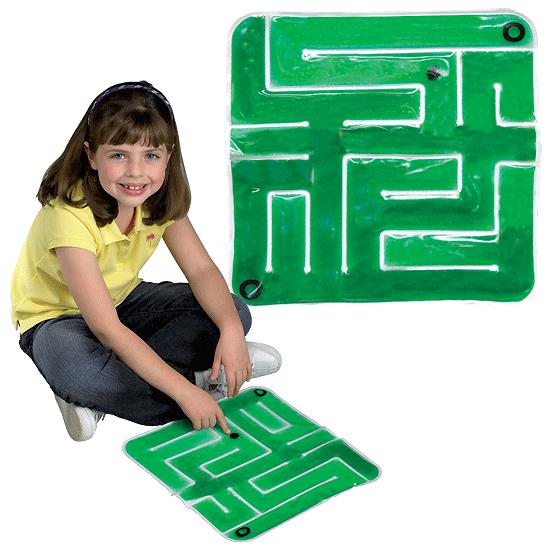
#4 3dRudder foot motion controller
Sparkly, glittery gel-filled activity pad is a fun way to develop and reinforce a variety of concepts and skills. Work on fine motor skill, finger position and movement, and visual tracking with this attractive, self-contained glitter-gel maze. Push the marble through the large maze while also working on motor planning.
#5 Marble Run
Create your own Marble Run with this construction set. Activate the yellow switch (included) and listen to two upbeat musical tunes while watching the marbles shoot down and around bridges, columns, spinning wheels and funnels. Marble Run is motorized so the marbles automatically return to the top. Good for increasing visual attention and improving tracking.
A Child's Champion – Amy Burt, EdD, OTR/L
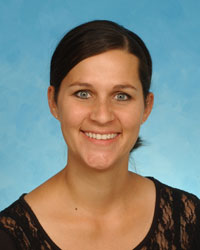
Dr. Amy Burt, EdD, OTR/L is an associate professor and program director of the WVU Masters of Occupational Therapy program. She is also the occupational therapist for the WVU CED’s Feeding and Swallowing Clinic and a LEND Mentor. Since 2005, Amy’s clinical focus has been pediatric practice focused on developmental disorders, autism, sensory processing and integration, pediatric vision, dyslexia, handwriting, feeding challenges and inclusive play and activity. Over the years, Amy has been involved in DreamCatchers, an inclusive musical theater program, and The Friday Program, an adapted physical education program.
Amy feels that her impact will be with the professional development of her students as she teaches them how to help children and their families. She plans to continue to work to broaden the awareness of the value of occupational therapy and the critical role it serves for pediatric cases. Amy continues to serve children and their providers across the state by presenting at pediatric conferences and also working collaboratively to support early intervention screening and assessment improvements in West Virginia. She has dedicated her professional career to serving children with different abilities and special health considerations and their families.
Thank you, Amy, for working to improve the quality of life for children with disabilities!
